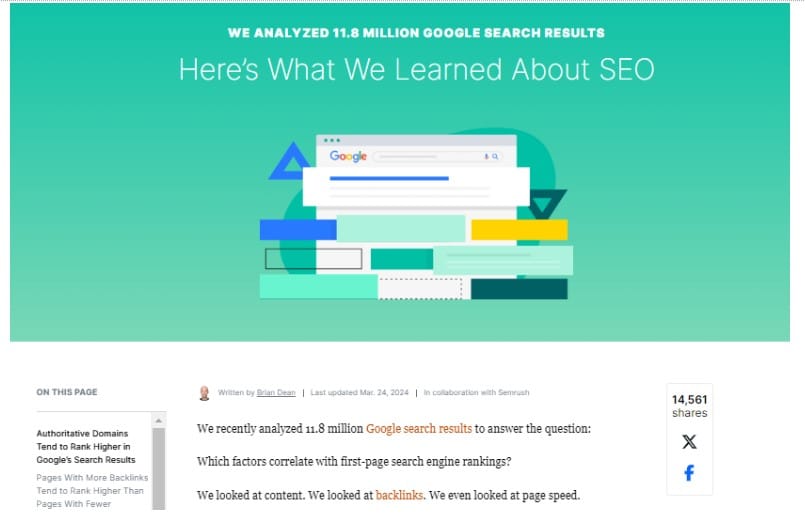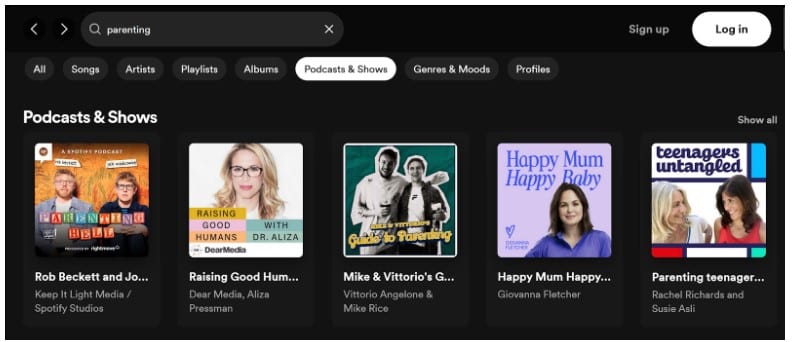Public relations content is essential for shaping public opinions of your brand, creating brand recognition, and nurturing strong customer relationships.
However, not all PR content is created equal.
Understanding the various types of content is a must if you want to reach your business goals and effectively connect with your ideal customers. Let’s dive into three types of PR content that can help you.
1. Press mentions
Press mentions are references about a business, product, or people in news stories, radio or TV shows, and influencers’ social media posts.
These mentions may bring visibility and credibility since they are often seen as endorsements or validations of the company’s activity. As a result, they can also serve as social proof.
There are numerous tried-and-true methods for getting press mentions.
A common strategy involves proactively reaching out to journalists and media outlets to promote your blog posts, press releases, and other informative content. Note, however, that journalists typically only respond to 3 percent of pitches. So, ensure you develop a compelling story angle or news hook that will capture the attention of reporters and editors.
A ground-breaking study, like the one below, can easily earn valuable press mentions:

True enough, that same study was referenced by Medium in its article below:

To get the most out of these press mentions, you can hire a SaaS link-building agency that can ensure references such as the one above are linked to your site. This will help you reap the SEO benefits brought by these valuable backlinks.
Furthermore, participating in industry events, speaking engagements, and award programs may boost your profile. As a result, you can ensure you remain top of mind of journalists who regularly look for industry experts to reference in their content.
Also, consider signing up for email alerts from online platforms that link journalists with potential sources, like HARO and SourceBottle. Here is an example of journalists seeking sources and pitches on SourceBottle.com.

Finally, showing your brand’s support for local causes and community initiatives can illustrate your company’s dedication to creating a positive influence beyond financial gains. This can then open up opportunities for media attention and, ultimately, press references.
2. Traditional media interviews
Interviews, in general, can help you establish a deeper connection with your potential customers than press mentions. After all, interview content, when shown, tends to be longer. The more your audience gets exposed to your messaging, the better they get to know you. Like press mentions, this type of PR content helps you highlight your expertise and build your brand reputation and credibility.
Although practically anyone can interview anyone nowadays, let’s zero in on traditional media interviews in this section. After all, traditional media isn’t entirely dead. In fact, research has shown that EU citizens, in particular, trust traditional media the most. That means if you get interviewed by traditional media organizations with known credibility, you can further boost your image as an authority in your niche.
You can get invited to traditional media interviews if you boost your profile as a thought leader in the industry. For this, just follow the tips I mentioned in the previous section.
Now how do you make the most of traditional media interviews for PR? Be clear on the topic to be discussed. Then make the necessary preparations. You might need to conduct in-depth research about current industry trends, for example. Ensure you understand the needs and interests of the audience as well. You can use generative AI technology to create a script you can use as a guide throughout the interview.
If you don’t have time for the traditional media interview, you can also select the most suitable spokespersons to represent your organization. They should have a solid understanding of your message and be able to communicate it effectively to the media and the public.
Always consider the traditional media interview format, whether it’s an in-person TV interview, a virtual interview aired on television, or an in-person interview for print. Then tailor your approach accordingly.
For instance, a print interview may require more detailed responses, while an in-person interview on TV, like the one below, may entail more concise and engaging answers.

Ensure you stay on message when you’re being interviewed. Mind your nonverbal cues as well. Journalists and TV hosts are particular about these things. If they think you’re lying based on your body language, they might even confront you about it.
After the interview is done and the final content aired or published, consider getting a copy for publication on your own website. Who knows? Other authoritative sites might even link to the valuable content, helping boost your SEO and get it to a wider audience.
3. Podcasts
Podcasts are also a strategic communication tool. Through podcasts, you can demonstrate your expertise and offer valuable insights to your listeners. Besides, podcasts are great for reaching a relatively younger population. According to research, half of podcast listeners are aged 12 to 34, with the other half being just a little older.
There are two ways you can leverage these pieces of content for PR. You can either be an interviewee on a relevant podcast or be the host of your own company’s podcast.
If you prefer to be a guest on popular podcasts, just make sure you choose podcasts with the same target audience as yours. You can use Spotify or Apple Podcasts to find these relevant podcasts. See which ones have a large following and send them your pitch.

To start your own podcast for your PR campaigns, you’ll need to define your goals and identify your target audience first. From there, you can begin brainstorming topics and potential guests whose goals align with your objectives.
Promote the podcast episode where you appear as a guest or your own brand podcast. Social media, email campaigns, and partnerships with influencers can help you expand your reach and maximize the impact of your PR marketing efforts.
In closing
PR content varies depending on the audience and platform. Various types of content have unique roles and enable you to reach various business objectives.
Therefore, understanding the main types of PR content and how to use them effectively can help you create a comprehensive public relations strategy. We have discussed three main ones—press mentions, traditional media interviews, and podcasts.
By including one or more in your PR strategy, you can achieve your public relations goals and, ultimately, your business objectives.
Good luck!






